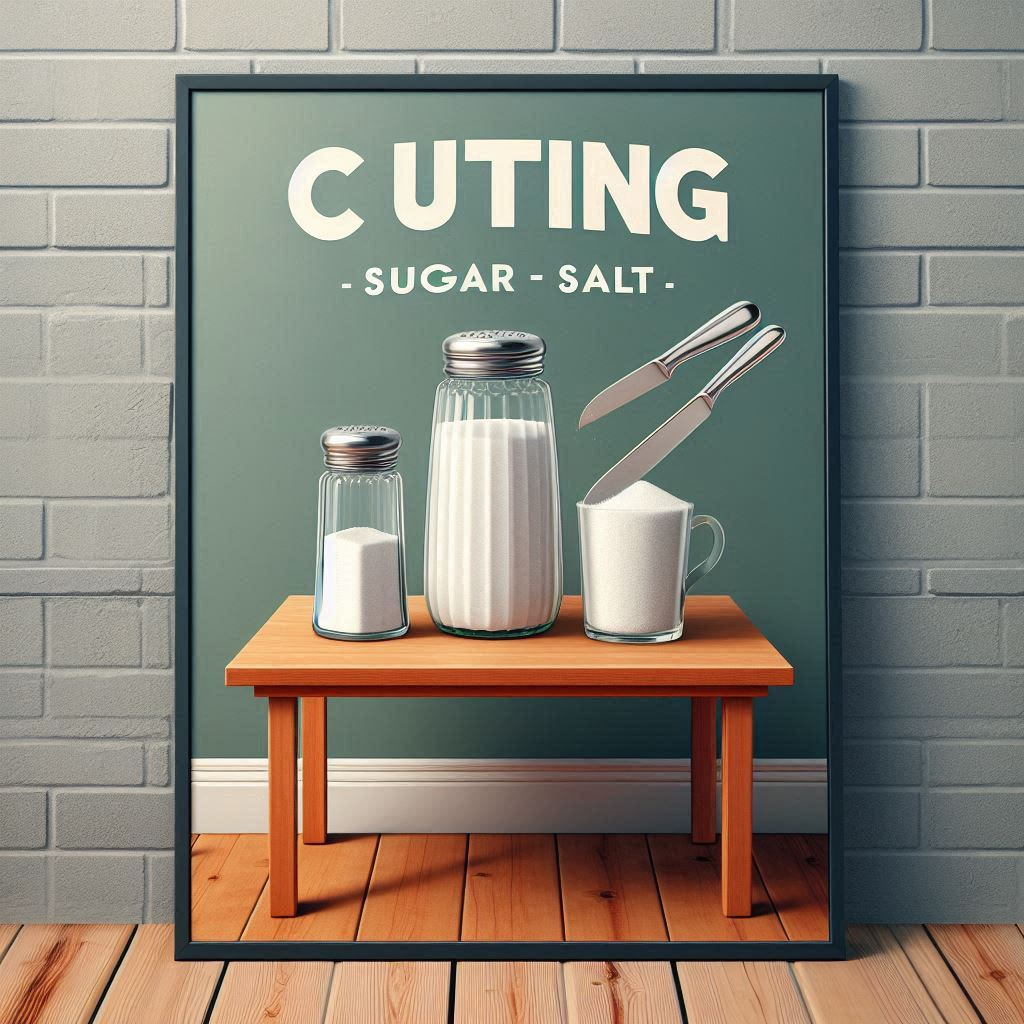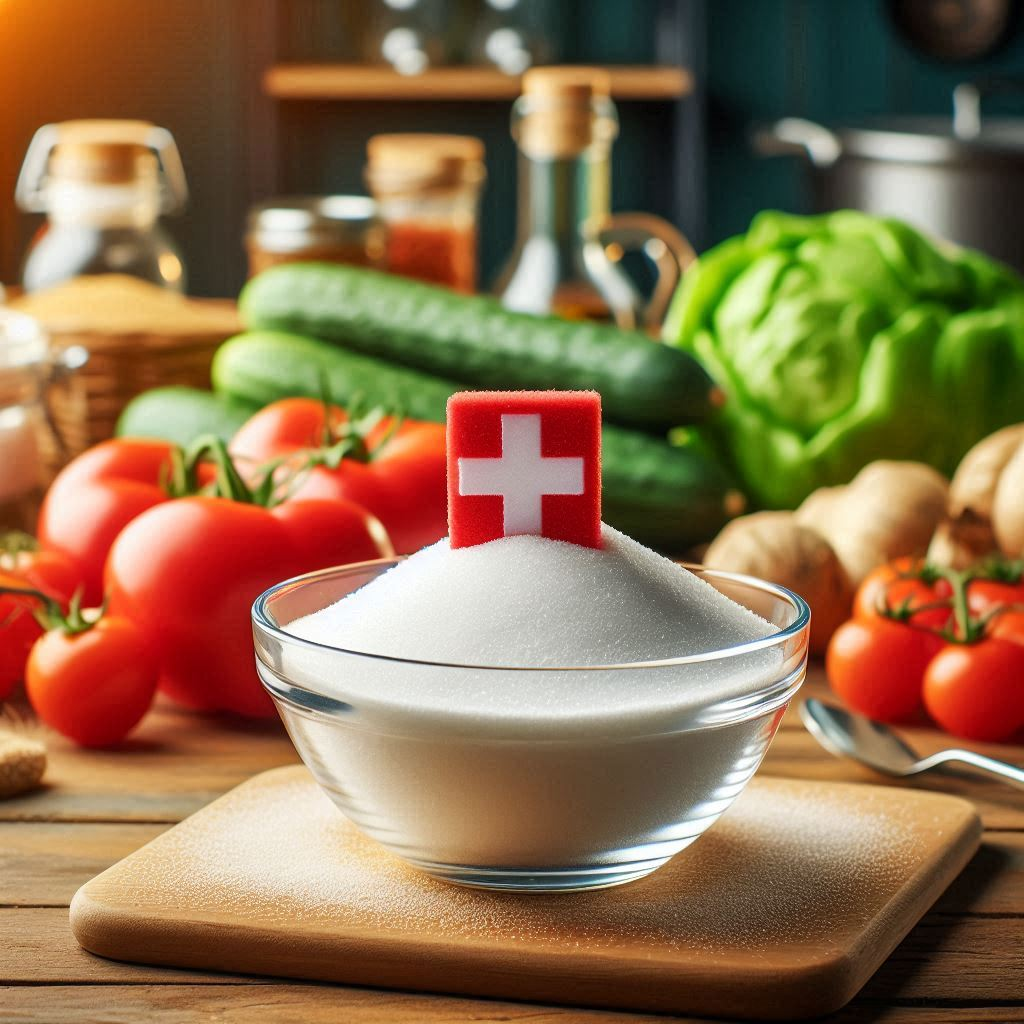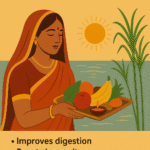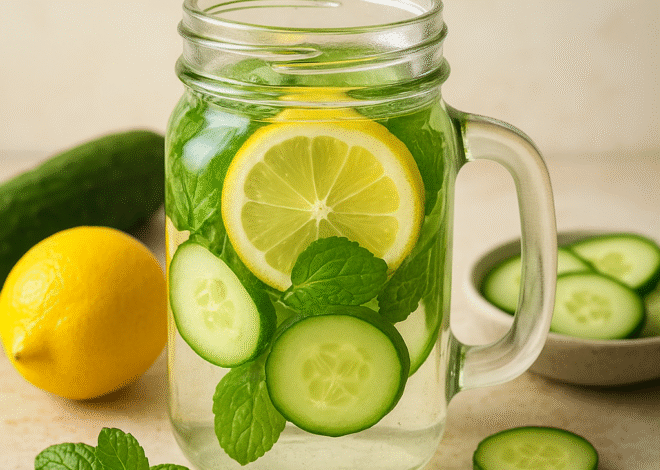
Cutting Sugar and Salt…
In today’s fast-paced world, it’s easy to fall into the habit of consuming foods high in sugar and salt without even realizing it. From that quick snack to the convenience of fast food, sugar and salt are almost everywhere. While these ingredients add flavor, they can also lead to significant health issues if consumed excessively over time. But cutting down on sugar and salt doesn’t mean you need to sacrifice taste or enjoyment. With a few changes, you can create a diet that supports health while still being delicious.

Sugar and salt, in moderation, serve essential functions in the body. Sugar provides an immediate source of energy, while salt (sodium) is crucial for nerve function and fluid balance. However, the problem arises when they are consumed in excessive amounts, often hidden in processed foods. Consuming too much sugar has been linked to weight gain, diabetes, and heart disease, while excess salt intake can lead to high blood pressure and an increased risk of stroke. By recognizing where sugar and salt lurk in our diets, we can make more informed choices to protect our health.
The Impact of Excessive Sugar
Sugar is often hidden in products where you might not expect it, like sauces, dressings, and bread. Even “healthy” snacks like granola bars or smoothies can contain a high amount of added sugars. Consuming too much sugar affects your health in several ways:
- Weight Gain and Obesity: Excess sugar, especially from sugary drinks and desserts, can lead to weight gain and obesity, both of which increase the risk of various chronic diseases.
- Increased Risk of Type 2 Diabetes: Sugar overload can lead to insulin resistance, a precursor to type 2 diabetes. Reducing sugar intake helps keep blood sugar levels stable and insulin working efficiently.
- Heart Disease: Research suggests that high sugar intake is linked to an increased risk of heart disease. This is partly due to the inflammation and increased fat storage caused by sugar consumption.
The Risks of Too Much Salt
Salt is a common flavor enhancer, but most people consume far more than the daily recommended amount. Processed foods are often the primary source of excess salt. Here’s how too much salt impacts the body:
- High Blood Pressure: Excess salt in the bloodstream attracts more water, increasing blood volume and putting pressure on blood vessels, which can lead to hypertension.
- Kidney Damage: Your kidneys work to filter out excess sodium, but a high salt diet can strain the kidneys, leading to long-term damage.
- Bone Health: High salt intake can lead to calcium loss, which impacts bone density and increases the risk of osteoporosis.
How to Cut Back on Sugar
Reducing sugar consumption does not necessitate the complete elimination of all sweets. Instead, focus on limiting added sugars while still enjoying the natural sweetness of fruits and whole foods. Here are some strategies to help:
- Read Labels Carefully: Sugars are often labeled as high-fructose corn syrup, maltose, or cane sugar. Check for these names in ingredient lists and opt for products with lower sugar content.
- Choose Whole Fruits over Juices: Whole fruits have natural sugars, but they also contain fiber, which helps regulate blood sugar. In contrast, fruit juices frequently contain added sugars.
- Use Natural Sweeteners: Substitute refined sugar with natural sweeteners such as honey, maple syrup, or stevia. These options are less processed and provide a gentler impact on blood sugar.
- Limit Sugary Beverages: Sodas, energy drinks, and even flavored coffees are packed with sugar. Opt for water, herbal teas, or flavored seltzer as a healthier option.
- Make Desserts Healthier: Try recipes that use natural sweeteners and incorporate fruits for a delicious but less sugary dessert option.
Strategies to Reduce Salt Intake
Salt is essential, but most people consume too much. Here’s how you can control your sodium intake without compromising on taste:
- Cook at Home More Often: Restaurant meals are usually high in salt. Home cooking affords you the control over the salt content in your meals.
- Experiment with Herbs and Spices: Add flavor to your meals with herbs like basil, cilantro, or rosemary. Spices such as turmeric, cumin, and paprika can also add depth without extra sodium.
- Choose Fresh Foods: Processed foods are often loaded with salt to increase shelf life. Focus on fresh fruits, vegetables, and whole grains.
- Opt for Low-Sodium Options: Many canned goods, sauces, and packaged foods offer low-sodium alternatives. Look for labels indicating low sodium content.
- Rinse Canned Foods: If you use canned beans or vegetables, rinse them to remove some of the added salt.
Finding the Balance: Tips for a Sustainable Diet
Cutting back on sugar and salt doesn’t have to feel restrictive. It’s all about balance and making healthier choices that fit into your lifestyle. Here are some practical tips:
- Practice Portion Control: Sometimes, it’s not what you eat but how much you eat. Keeping portion sizes reasonable can help you enjoy your favorite foods in moderation.
- Stay Hydrated: Often, thirst can be mistaken for hunger, which leads to unnecessary snacking on sugary or salty foods. Drink water throughout the day to help control cravings.
- Snack Smart: Choose snacks like fruits, nuts, and yogurt. These foods are nutrient-dense and will keep you satisfied without the sugar rush or sodium spike.
- Plan Your Meals: Preparing your meals in advance gives you control over what goes into your food. When you’re less reliant on take-out or processed snacks, you can manage sugar and salt levels more effectively.
- Set Realistic Goals: If you’re used to a high-sugar or high-salt diet, don’t cut back too drastically at once. Gradual changes are more sustainable and less likely to lead to cravings.
Delicious Low-Sugar, Low-Salt Snack Ideas
To inspire you, here are some snack ideas that are both flavorful and nutritious without the high sugar or salt content:
- Veggies with Hummus: Fresh veggies like cucumber, carrots, and bell peppers pair well with hummus. The fiber and protein will keep you full, and the flavors are naturally satisfying.
- Fruit with Nut Butter: Try apple slices with almond butter or banana with peanut butter for a sweet yet balanced snack.
- Greek Yogurt with Berries: Greek yogurt is high in protein and pairs well with fresh berries for a hint of natural sweetness.
- Roasted Chickpeas: These crunchy snacks are high in fiber and can be seasoned with your favorite herbs for extra flavor without salt.
The Benefits of Reducing Sugar and Salt
By making a conscious effort to reduce sugar and salt, you’re actively contributing to your long-term health. You may experience a variety of benefits, including:
- Improved Heart Health: A lower salt intake can help reduce blood pressure and lower the risk of heart disease.
- Better Weight Management: Reducing sugar helps control cravings and avoid energy spikes, leading to healthier weight management.
- Enhanced Energy Levels: Excess sugar often leads to energy crashes. Cutting back can help you maintain stable energy throughout the day.
- Clearer Skin: High sugar intake has been linked to skin issues. A balanced diet can promote clearer, healthier skin.

Conclusion
Cutting back on sugar and salt doesn’t have to be difficult or depriving. By focusing on whole foods, experimenting with herbs and spices, and choosing healthier options, you can enjoy a diet that supports your health goals. Every small step counts toward a healthier you, so start with one or two changes and build from there. The benefits are well worth the effort, giving you more energy, better health, and a vibrant life to enjoy.










